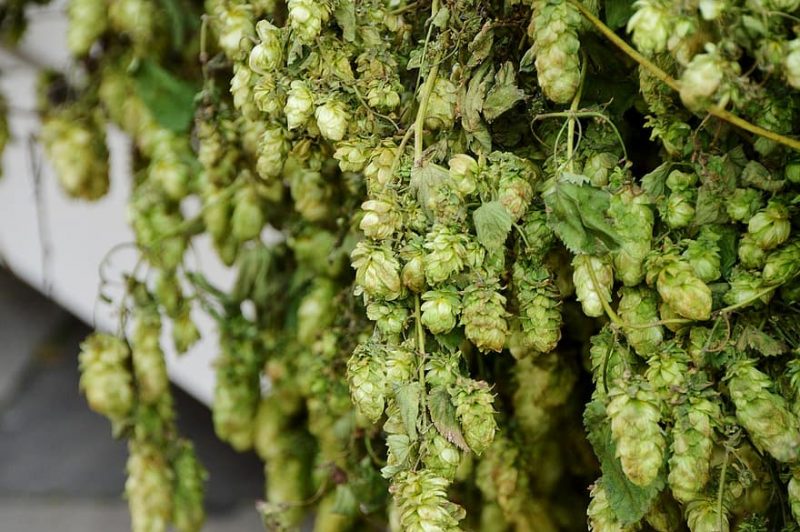Those who want to know how to grow hops in Ohio need to understand the three steps below. Besides Michigan, the buckeye state is also an excellent location for hops production. However, it’s not enough that the location is ideal for growing hops.
Careful planning, site preparation, and overall management are three areas that you must undergo to guarantee success. The Ohio State University Extension emphasizes the importance of looking into the points to consider before operating a hops production. After studying the key subjects below, make sure to deepen your research with hops themselves and how to thrive best in Ohio.

Growing Hops In Ohio
Step #1. Planning
The first step when growing hops in Ohio is planning, and this is a crucial part for every grower to avoid any setbacks later on. For example, you have to be prepared and secured with a list of brewery buyers before you begin producing hops. You want to know what variety and how much hops your buyers require and then use the information when purchasing your plants and if you need to process the hops or not for them.
More so, remember that time is crucial with hops production; therefore, the tasks require labor to achieve them on time. You may also need specific facilities to process your hops according to the requirement of your buyers. Once you have the labor and facilities considered, you can determine the costs you’ll need for efficient hops production.
Lastly, remember that you may have to undergo an inspection from the Ohio Department of Agriculture if you intend to sell hops to the end-user or distributor. This means having a food safety audit and inspection annually compared to only producing hops for bulk to a packaging firm. Be mindful of law requirements and always be updated with what the Food and Drug Administration sets.
Step #2. Site preparation
The second step for Ohio hops growers is preparing the site and knowing the considerations for the crop. Ideally, you should be one year ahead in site preparation before you even start planting. A useful tip is to go to the Ohio State University Extension office and find an educator to help you with site evaluation to ensure that you have the acreage required.
More so, the location itself is crucial because there might be zoning restrictions in your chosen area in Ohio. And once you have the site, you should be ready for the necessary preparations for hops. For example, you have to install a drainage system to prevent damaging your crops’ root systems.
You also need to test your water quality and discharge volume to avoid drawbacks in hops development later on. On the other hand, the site itself should also be safe from weeds. Lastly, get your trellis or raised bed systems ready before planting.
Step #3. Management
Once you have your plan and site secured, the final step is knowing how to manage hops production in Ohio. For example, anticipate what varieties your target brewery buyers need. Not only will plant selection guarantee a market, but this will also ensure that you’ll be able to deliver their needs on time at optimal quality and volume.
You want to provide the acre that the varieties require and their other needs to ensure quality hops. This means knowing the nutrient needs of hops and testing your soil to identify the necessary amendments. You may also need to get a certification for fertilizer application with OSU extension.
Finally, be prepared for potential problems and issues in hops production. Remember that whatever product you use to address and manage these problems, it should be safe for hops and human consumption. You can’t settle for using untested home remedies as this is illegal.
What To Know When Growing Hops
The best time to plant hops is once the soil becomes workable. Position the rhizome so that the buds point upward and then plant horizontally. For maintenance, monitor the dryness of the ground and add organic fertilizers to boost your yield.
You must also immediately remove affected parts when you notice signs of problems such as powdery mildew and pests. If necessary, check the recommended fungicide or pesticide for hops to prevent their spread. Lastly, you can start picking hops when the leaves turn brown around the edges, and their texture becomes papery.
Conclusion
The buckeye state makes an excellent place for hops production. Therefore, it’s not surprising that many people are looking into learning how to grow hops in Ohio and venture into this industry. It’s essential to do your research from reliable resources, but one can simplify the central concept into three steps.
First, planning is the most crucial step to avoid drawbacks later on. You have to secure hops varieties, labor, facilities and know about the laws and restrictions regarding hops production in Ohio. You can then prepare the site a year before planting and ensure that it is optimal for growing hops.
Lastly, be prepared for the management practices that your hops require. You will need to know what your brewery buyers need at what volume and period to ensure that you can provide it without compromising quality. It’s also important to anticipate potential problems and issues in hops production.
